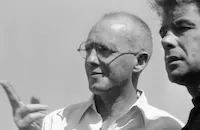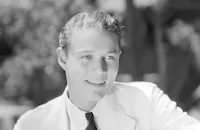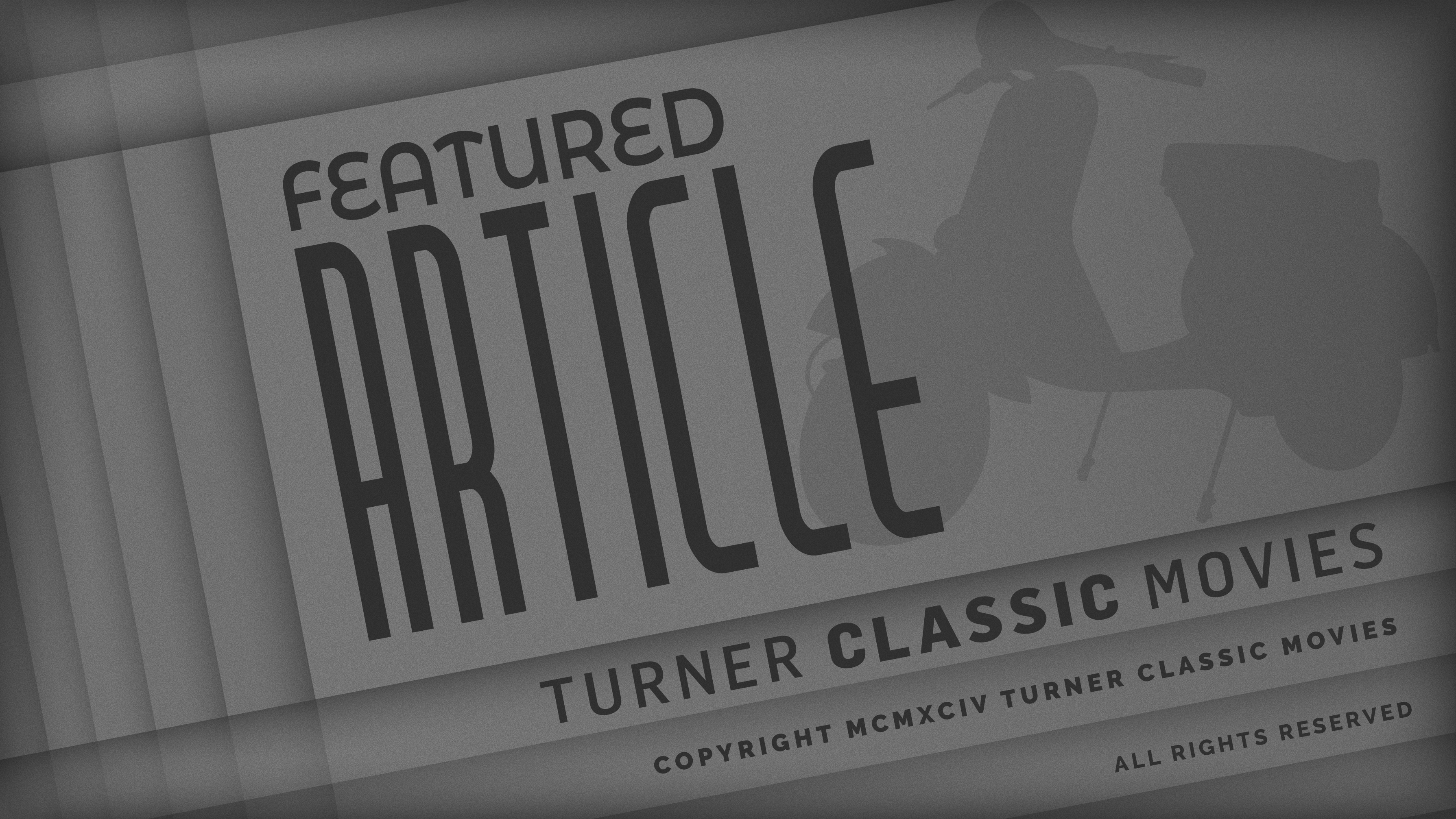Tarzan Escapes

Brief Synopsis
Cast & Crew
Richard Thorpe
Johnny Weissmuller
Maureen O'sullivan
John Buckler
Benita Hume
William Henry
Film Details
Technical Specs

Synopsis
Noble-born English woman Jane Parker lives with her wild man sweetheart, Tarzan, in a tree-top hideaway deep in the heart of the African jungle. Jane and Tarzan's home is equipped with running water, an elevator operated by an elephant and a monkey-powered fan. While Jane and Tarzan enjoy their peaceful life, Jane's relatives from England, Rita and her brother Eric, arrive in Africa intent on finding Jane and taking her back to England. Rita and Eric commission the nefarious Captain Fry to lead them to Jane so that they can tell her that she must go to London to sign legal papers relating to her recently deceased uncle's bequest. Captain Fry, an animal hunter, initially denies Eric and Rita's request because he knows the dangers involved in such a trek, but he eventually agrees to escort them in the hope of finding and capturing the infamous great white ape and exporting it to London. Accompanied by his bumbling assistant, Rawlins, and a group of navigating jungle natives, led by Bomba, Fry begins his journey. Soon after embarking on the trip, the party is attacked by the Ganeloni tribe, and Bomba's men desert. While the expedition camps out in a village, Tarzan and Cheetah, his chimpanzee friend, quietly enter their camp and release a number of caged monkeys. Tarzan then returns home, where Jane notices evidence of his having come into contact with white people and asks to be taken to them. Happy to see her relatives, Jane invites them to the treehouse for a meal, and while Tarzan collects food for the feast, Eric and Rita urge Jane to return to London with them. Jane initially objects to leaving Tarzan, but she eventually agrees to go, promising Tarzan she will return as soon as possible. Tarzan takes the news bitterly, but when she insists on spending a day with him before leaving, he is assured of her true feelings for him. Meanwhile, Fry's evil designs upon Tarzan become clear as he arranges to capture him and double-cross Rita and Eric. When the good-hearted Rawlins attempts to foil Fry's plans, Fry kills him and leads Tarzan into a trap by infuriating him with a lie about Jane's plans to stay away forever. Fry persuades Tarzan to enter a cage of his own will by claiming that it is Jane's wish that he do so. However, when Tarzan hears the approach of warriors, he manages to free himself with the help of two elephants. He then rushes to rescue Jane, Eric and Rita, who are being prepared for sacrifice by natives who ambushed them on the trail. After sounding an ape-call that summons elephants to their rescue, Tarzan exposes Fry as a villain and drives him into swampy waters, where he meets his death. Grateful for having been rescued, Rita and Eric inform Jane that their mission was a ruse and that she was not needed in England after all. Jane then bids her relatives farewell and returns to live with Tarzan.

Directors

Richard Thorpe

John Farrow
George B. Seitz
James Mckay

William Wellman
Cast

Johnny Weissmuller

Maureen O'sullivan
John Buckler

Benita Hume

William Henry

Herbert Mundin

E. E. Clive
Darby Jones
Cheetah, The Chimpanzee
Crew
Jack Cummings
Jack Cummings
Philip Goldstone
W. Donn Hayes
Cyril Hume
Bernard Hyman
Frank Lawrence
Douglas Shearer
Elmer Sheeley
Leonard Smith
Ernest Wilson
Sam Zimbalist

Photo Collections
Film Details
Technical Specs

Articles
Tarzan Escapes
The previous adventures, Tarzan the Ape Man (1932) and Tarzan and His Mate (1934) had both been huge successes so there was pressure to provide another strong story that would keep the franchise alive. However, one of the elements that made these two films so successful would have to be cut back. Both the earlier movies were released before mid-1934 when tougher enforcement of the Production Code began. A large part of the box-office draw for the two earlier films was not action in a steaming jungle, but the steaming action between Tarzan and Jane. Their jungle romps were some of the most provocative of that period and even included a short nude swimming scene for Jane in the latter movie.
Realizing that sex was out of the question, MGM decided to go for violence instead. The plot for the movie had two of Jane's cousins seeking her out in Africa to tell her of a fortune she has inherited. Their guide is the sinister Captain Fry who wants to capture Tarzan and take him back to civilization in a cage to hawk as a sideshow freak. Murder, slow death in bogs and attacks by vampire bats follow, leaving corpses strewn about the jungle.
Filming began in July 1935 under the title Tarzan Returns (Tarzan and the Vampires and Capture of Tarzan were also considered as titles) with James McKay directing. McKay had been second unit director on Tarzan and His Mate and this was the first feature he had directed in the sound era. Karl Brown, former camera operator for director D.W. Griffith, now turned screenwriter, provided the treatment that was fleshed out by Louis Mosher, John Farrow, Wyndham Gittens and Otis Garrett.
The finished film was previewed that October and got poor audience response. Elements like the vampire bat attacks were considered too graphic and the villain considered too weak. Usually this meant a few touch-ups and a few scenes reshot. However, the Tarzan franchise was thought too important to risk, so in early 1936, MGM decided to scrap the early version and rewrite and reshoot from scratch. MGM contract director Richard Thorpe was now behind the camera directing from a revamped script by Cyril Hume, who had written the script for the first film in the series. A new character, a comical sidekick named Rawlins, was added along with a romantic subplot in which Tarzan and Jane face a potentially long separation from each other.
Shooting began in July 1936 and ended in September. The total cost of both movies ended up topping $1 million but MGM more than made the cost back at the box office as Tarzan Escapes! became another worldwide success. Tarzan and Jane managed not only to survive their foes, but the Production Code and expensive reshoots as well.
Producer: Sam Zimbalist
Director: Richard Thorpe
Screenplay: Cyril Hume
Cinematography: Leonard Smith
Film Editing: W. Donn Hayes
Art Direction: Elmer Sheeley
Music: William Axt, Sol Levy
Cast: Johnny Weissmuller (Tarzan), Maureen O'Sullivan (Jane Parker), John Buckler (Capt. Fry), Benita Hume (Rita Parker), William Henry (Eric Parker), Herbert Mundin (Herbert Henry Rawlins), E.E. Clive (Masters).
BW-90m.
by Brian Cady

Tarzan Escapes
Quotes
Trivia
Originally directed by James C. McKay, who filmed many gruesome scenes, and was replaced by John Farrow (I).
Notes
Working titles for this film were Tarzan Returns, Capture of Tarzan and Tarzan and the Vampires. According to contemporary sources, nine months after filming on the picture was completed, the film went back into production for a second time because M-G-M was not satisfied with the story. On July 13, 1936, after spending a reported $600,000-$700,000 on the picture, filming resumed with Richard Thorpe replacing John Farrow as the director. It was predicted in the news items that the second round of filming would cost the studio an additional $200,000. While some contemporary sources refer to the second round of filming as "retakes," Hollywood Reporter called it a "complete remake of the M-G-M jinxer [the first version]." Tarzan and His Mate, the previous M-G-M Tarzan film, also had a protracted production schedule and personnel problems. Hollywood Reporter production charts indicate that James McKay was the first director of the initial shooting, and that he was replaced by Farrow in July 1935. Modern sources note that M-G-M decided to re-shoot the picture following a preview screening that was met with disapproval by scared children and outraged mothers. The studio responded by sending an order to remove all gruesome scenes from the film and replace them with re-takes. Bernard Hyman took over as producer for the second round of filming. Production on the film was completed on September 4, 1936, and M-G-M was left with two versions of Tarzan Escapes, the first of which was never released.
Modern sources also relate the following information concerning the two versions of this film: The treatment for the first version was written by Karl Brown, with later contributions by Louis Mosher, Wyndham Gittens and Otis Garrett. The second version was written by Cyril Hume and Edwin Knopf. Granville Bates, who was originally assigned to the role of the Skipper, was dropped from the cast, while a new character, Rawlins, played by Herbert Mundin, was added for the second version; Darby Jones took over the role of Bomba from Everett Brown; art director Cedric Gibbons was replaced by his associate, Elmer Sheeley; special effects director James Basevi was replaced by Arnold Gillespie; photographic effects man Max Fabian was replaced by Thomas Tutwiler; operative cameramen Virgil Vogel and Walter Strenge were replaced by Charles Salerno, Jr.; and Sol Paul Levy and Dr. William Axt composed the music for the second version. Other individuals credited in modern sources for their contribution to the film include: Edwin B. Willis (Set Decoration); James Newcombe (Art eff); Ralph Shugart, S. J. Lambert, Ralph Pender, R. L. Sterling, Don T. Whitmer, T. B. Hoffman, Michael Steinore and Mike McLaughlin (Sound); and Albert Scheving and Bob Gough (Assistant Camera).
Studio publicity material for Tarzan Escapes noted that Johnny Weissmuller studied the native Swahili language under the tutorship of Dr. Ernest Wilson for his role in the film. The publicity material also notes that underwater scenes were filmed with a special "diving camera." Modern sources note that the exterior of the tree bungalow was built on location in the Santa Monica Mountains, at a site now known as Malibu Creek State Park, and that a replica of the bungalow was built on an M-G-M sound stage. The film marked the second reunion of Weismuller and O'Sullivan in M-G-M's Tarzan series, and they went on to do three more Tarzan pictures together. Actor John Buckler died in an automobile accident one week before the picture was released.
According to modern sources, film footage of the Murchison Falls in Africa, shot for W. S. Van Dyke's Trader Horn (see below), was used in this film, as was footage from Tarzan and His Mate and Tarzan, the Ape Man (see below). A modern source pegs M-G-M's final expenditure for both versions of the film at $1,058,430. For information on other films featuring the Tarzan character, consult the Series Index and for Tarzan, the Ape Man.















